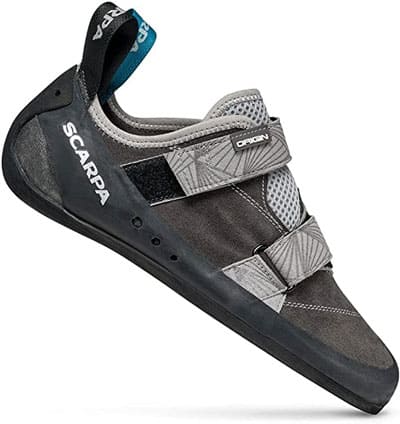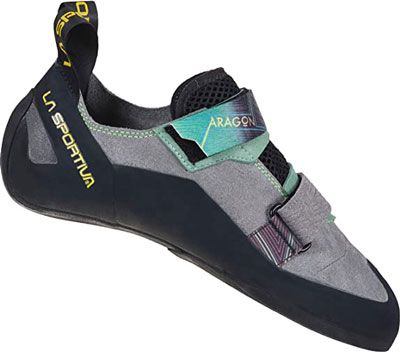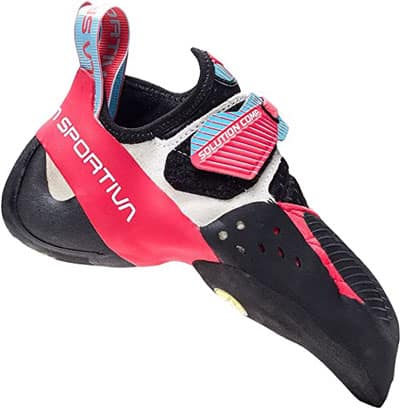There is no doubt about the importance of a climbing shoe in every climb. And having the right climbing shoe is essential to maximize performance. If you are just a beginner, you need to be familiar with three types of climbing shoes: moderate, aggressive, and neutral.
But what are the differences between these three climbing shoes? The obvious difference is the comfort of the three shoes, with the neutral shoes being the most comfortable as they are designed for beginners, but other differences will be covered. After reading, you will learn the difference between moderate vs aggressive vs neutral climbing shoes.
| Point of Difference | Neutral | Moderate | Aggressive |
| Climbing Experience | Beginner | Intermediate | Experienced |
| Sole | Medium Thick | Stiffer | Stiff |
| Comfort Level | High | Lesser | Least |
| Shape | Flat | More Downturned | Asymmetrical |
| Rubber | Sticky | Softer | Stickier |
Climbing Experienced

The first factor that differentiates between neutral, moderate, and aggressive shoes is the type of climbers that best fit in using them. These climbing shoes are intended for different types of climbers in relation to their experience.
The neutral climbing shoes are built for those climbing enthusiasts just starting their climbing journey. On the other hand, when a climber has already gained enough experience, the climber’s next shoes should be the moderate type. Last, the aggressive one is built for very experienced climbers.
Comfort Level

All of the climbing shoes may look identical, but they also have some differences, such as in the comfort level. The neutral climbing shoes allow the feet to relax in a flat and regular position. This climbing shoe is built to emphasize the user’s relaxation over its climbing usage. For this reason, many users who are just starting to learn climbing use this climbing shoe.
On the other hand, moderate climbing shoes go beyond simple relaxation of the feet. This type of shoe does not have the relaxation that neutral shoes offer but puts the feet in a powerful and stronger position to climb for more challenging climbing routes.
Lastly, the aggressive climbing shoes have less comfort than all three climbing shoes. The shoe’s downturned shape put the feet in a lot of discomfort, but the shape was designed to put the feet in a powerful position for overhanging sports climbs.
Shape

Another difference between these three climbing shoes is their shape. The neutral shoes come with a flat design that allows the foot to lie properly for excellent comfort. The neutral climbing shoe has a relatively flat profile, making it perfect for slotting cracks.
On the other hand, moderate climbing shoes have a more downturn shape, providing more power to the foot when pushing on tiny ledges and holds. Furthermore, the downturn shape allows the shoes to be used for technical climbing.
Lastly, aggressive climbing shoes have a more asymmetrical shape or a slightly rounded curvature. The most aggressive shoes come in an asymmetrical shape that has the ability to curve to the big toe. This shape will focus the climber’s power over the toe for more precision when it comes to placement on small holds.
Sole
These three climbing shoes also have some uniqueness in the soles. Neutral shoes have medium-to-stiff midsoles that are less sensitive than the other climbing shoes, which is a downside for this shoe.
On the other hand, the moderate climbing shoe has thinner soles compared to the neutral type. This feature allows the shoes to have better grip and feel. It also helps in putting a more powerful position during the climb as it helps the climber in dealing with more challenging routes.
Lastly, the aggressive climbing shoes come with rubberized and thinnest soles compared to the other two types of climbing shoes. This feature provides a better grip and feel to the climber. This type of sole’s downside is that it wears faster than the other two.
Other Related Information
I have mentioned that neutral shoes are perfect for beginners. However, there are also advanced or more experienced climbers using neutral shoes for all-day multi-pitch climbing routes.
Meanwhile, moderate climbing shoes are known to be the next purchase for new climbers after their original shoes wear out. As mentioned, moderate shoes are perfect for technical climbing, including cracks, slabs, and longer multi-pitch climbs.
Aggressive shoes are known to be unsuitable for single pitch sports climbs and challenging bouldering problems. The reason behind it is the tendency of the sole to flex too much when torqued inside the track.
When buying your climbing shoe, it is advised to buy it in a physical store. By doing this, you can try to fit different brands and models that will allow you to see the best one for your feet.
Choosing the right climbing shoe is not easy, but you need to check on the fitting and the way they bend. Always remember that climbing shoes perform excellently when the toes are bent on the knuckles. But remember that you will also lose some comfort with this fit.
Conclusion
The three types of climbing shoes offer different features and functionalities during the climb. For this reason, learning the difference between moderate vs aggressive vs neutral shoes is necessary to know the right one for your climbing needs.

